Volume 14, Issue 1
Japanese Journal for Research on Testing
Displaying 1-5 of 5 articles from this issue
- |<
- <
- 1
- >
- >|
-
2018Volume 14Issue 1 Pages 1-16
Published: 2018
Released on J-STAGE: September 14, 2018
Download PDF (339K)
-
2018Volume 14Issue 1 Pages 17-30
Published: 2018
Released on J-STAGE: September 08, 2018
Download PDF (2320K) -
2018Volume 14Issue 1 Pages 31-50
Published: 2018
Released on J-STAGE: September 08, 2018
Download PDF (1318K) -
2018Volume 14Issue 1 Pages 51-70
Published: 2018
Released on J-STAGE: September 08, 2018
Download PDF (1110K)
-
2018Volume 14Issue 1 Pages 71-84
Published: 2018
Released on J-STAGE: September 18, 2018
Download PDF (682K)
- |<
- <
- 1
- >
- >|
